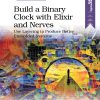Quantitative Finance With Python: A Practical Guide to Investment Management, Trading, and Financial Engineering 1st Edition by Chris Kelliher ISBN 1032014431 9781032014432
$50.00 Original price was: $50.00.$25.00Current price is: $25.00.
Quantitative Finance With Python: A Practical Guide to Investment Management, Trading, and Financial Engineering 1st Edition by Chris Kelliher – Ebook PDF Instant Download/Delivery: 1032014431, 9781032014432
Full download Quantitative Finance With Python: A Practical Guide to Investment Management, Trading, and Financial Engineering 1st Edition after payment

Product details:
ISBN 10: 1032014431
ISBN 13: 9781032014432
Author: Chris Kelliher
Quantitative Finance with Python: A Practical Guide to Investment Management, Trading and Financial Engineering bridges the gap between the theory of mathematical finance and the practical applications of these concepts for derivative pricing and portfolio management. The book provides students with a very hands-on, rigorous introduction to foundational topics in quant finance, such as options pricing, portfolio optimization and machine learning. Simultaneously, the reader benefits from a strong emphasis on the practical applications of these concepts for institutional investors. Features Useful as both a teaching resource and as a practical tool for professional investors. Ideal textbook for first year graduate students in quantitative finance programs, such as those in master’s programs in Mathematical Finance, Quant Finance or Financial Engineering. Includes a perspective on the future of quant finance techniques, and in particular covers some introductory concepts of Machine Learning.
Quantitative Finance With Python: A Practical Guide to Investment Management, Trading, and Financial Engineering 1st Table of contents:
It looks like you’ve provided a mix of search queries and a potential book title. I can definitely help you with a table of contents for the book “Quantitative Finance with Python: A Practical Guide to Investment Management.”
The other entries (“is quantitative finance a good career,” “is quantitative finance a good major,” “how long to learn python for finance”) are questions that would typically be asked about quantitative finance or Python, not sections within a book’s table of contents.
Here’s a likely table of contents for a book titled “Quantitative Finance with Python: A Practical Guide to Investment Management”:
Quantitative Finance with Python: A Practical Guide to Investment Management
Table of Contents
Part I: Python Fundamentals for Finance
-
Introduction to Python for Financial Applications
- Why Python for Finance?
- Setting Up Your Python Environment (Anaconda, virtual environments)
- Basic Python Syntax and Data Structures (lists, dictionaries, tuples, sets)
- Control Flow (if/else, for loops, while loops)
- Functions and Modules
- Object-Oriented Programming (OOP) Basics
-
Essential Libraries for Data Analysis
- NumPy for Numerical Computing (arrays, vectorized operations)
- Pandas for Data Manipulation (DataFrames, Series)
- Matplotlib and Seaborn for Data Visualization
-
Financial Data Acquisition and Handling
- Sources of Financial Data (Yahoo Finance, Alpha Vantage, Quandl, etc.)
- Downloading Historical Data
- Cleaning and Preprocessing Financial Time Series Data
- Handling Missing Values and Outliers
- Resampling and Aggregating Data
Part II: Core Quantitative Finance Concepts
-
Time Value of Money and Basic Financial Calculations
- Present Value, Future Value
- Annuities, Perpetuities
- Loan Amortization
- Bond Valuation
-
Descriptive Statistics for Financial Returns
- Calculating Returns (Simple vs. Log Returns)
- Mean, Median, Mode, Standard Deviation, Variance
- Skewness and Kurtosis
- Histograms and Distribution Analysis
-
Portfolio Theory and Optimization
- Modern Portfolio Theory (MPT) and Diversification
- Expected Return and Risk of a Portfolio
- Efficient Frontier and Optimal Portfolios
- Capital Asset Pricing Model (CAPM)
- Sharpe Ratio, Sortino Ratio
-
Risk Management
- Value at Risk (VaR)
- Conditional Value at Risk (CVaR) / Expected Shortfall
- Stress Testing
- Backtesting Risk Models
Part III: Advanced Topics and Applications
-
Option Pricing and Derivatives
- Introduction to Options (Calls, Puts)
- Binomial Option Pricing Model
- Black-Scholes-Merton Model
- Implied Volatility
- The Greeks (Delta, Gamma, Vega, Theta, Rho)
-
Time Series Analysis in Finance
- Stationarity, Autocorrelation, Partial Autocorrelation
- ARIMA, GARCH Models
- Cointegration
- Volatility Modeling
-
Algorithmic Trading and Backtesting
- Designing Trading Strategies (e.g., Mean Reversion, Momentum)
- Backtesting Frameworks and Methodologies
- Performance Metrics (CAGR, Max Drawdown, Sharpe, Alpha, Beta)
- Pitfalls of Backtesting (Look-ahead bias, overfitting)
-
Machine Learning in Finance
- Supervised Learning (Regression, Classification for prediction)
- Unsupervised Learning (Clustering for market segmentation)
- Feature Engineering for Financial Data
- Applications in Algorithmic Trading and Risk Prediction
-
Fixed Income and Interest Rate Modeling
- Bond Duration and Convexity
- Yield Curve Analysis
- Interest Rate Models (e.g., Vasicek, Cox-Ingersoll-Ross)
-
Monte Carlo Simulation in Finance
- Generating Random Numbers
- Simulating Stock Prices (Geometric Brownian Motion)
- Monte Carlo Option Pricing
- Portfolio Value Simulation
Part IV: Practical Considerations and Case Studies
-
Putting It All Together: Building a Comprehensive Investment Strategy
- Case Studies of Quantitative Strategies
- From Idea to Implementation
- Data Pipelines and Automation
-
Best Practices and Future Trends
- Code Optimization and Performance
- Ethical Considerations in Quantitative Finance
- Emerging Technologies (Blockchain, AI in Finance)
- Career Paths in Quantitative Finance
People also search for Quantitative Finance With Python: A Practical Guide to Investment Management, Trading, and Financial Engineering 1st:
quantitative finance with python: a practical guide
quantitative finance with python a practical guide to investment management
is quantitative finance a good career
is quantitative finance a good major
how long to learn python for finance
Tags: Chris Kelliher, Quantitative, Finance, Python
You may also like…
Business & Economics
Computers - Enterprise Computing Systems
Computers - Applications & Software
Business & Economics - Management & Leadership
Business & Economics
Business & Economics - Professional Finance
Education Studies & Teaching - Studying & Test Preparation
Business & Economics - Investing











